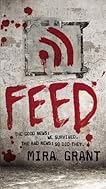The return of fall—or of fall weather anyway—inspires rather mixed feelings in the Fleming-Miller household. Caroline, good Southerner that she is, loves the heat. Me? I enjoy all things fall. Hiking through forests turned red and gold, mountain views becoming more expansive as the canopy falls. Jackets and sweaters replacing t-shirts. Shorter evenings catching us unaware.
Mostly, though, I love fall food.
Fortunately, that’s one thing about fall that Caroline and I both share. Winter squash, turnips, sweet potatoes, apples, pumpkins, all turned into soups or stews or baked into bread. Tucking into a hot and hearty dinner with my beautiful wife, nice glass of wine in hand, the darkness outside broken only by the light from our dining room leaking past the blinds—it’s about as close to a perfect evening as I can think of.
So with today’s 50 degree rain keeping us off the trails, I figured it was a good time to lift Caroline’s Ohmygoditswinteroutside blues with some fall flavors.
For breakfast: Whole wheat pumpkin pancakes. I lifted the recipe from Pinch My Salt, and used it nearly verbatim (my only addition was 1/2 tsp of Allspice.) Highly recommended.
Next up: Autumn Pumpkin Loaf, minus the pumpkin seeds (which we didn’t happen to have around.) Great right out of the bread machine, and should make even better toast this week.
Finally, dinner tonight is baked acorn squash with a pear-bourbon stuffing and an orange glaze. The squash and pears are courtesy of our CSA box. I’m going to be making this up a bit as I go along, so I’ll have to let you know how it goes later. But, you know, squash, pears, bourbon, and orange. Seems hard to go wrong.
But that part doesn’t happen until I get outside for a walk. It’s going back up to the 70s later this week. I’m going to enjoy the early taste of fall while I can.
Update: I did in fact get around to the acorn squash. And to the walk, though the rain cut it short a bit. Here’s the recipe I used, for those of you keeping score at home.
- Two medium acorn squash, cut in half with seeds removed
- Olive oil
- Two apples, peeled and chopped
- 1 TBSP brown sugar
- 2 TBSP bourbon
- 1 TBSP lemon juice
- 1 tsp cinnamon
- 1/2 tsp mace
- 1/2 tsp allspice
- 1/4 tsp salt
- 1/4 c. frozen orange juice concentrate
Cut brush the cut halves of the squash with olive oil and place on a parchment-covered baking sheet cut-side down. Bake at 350 for 20 minutes.
In the meantime, peel and chop the apples, then mix the next 7 ingredients (brown sugar through salt) in a bowl, stirring until combined. Add the apples and toss until coated.
Remove the squash from the oven, flip over and spoon apples into the seed cavity. Pour any remaining bourbon mixture over the apples. Return to the oven for 20 minutes.
Put orange juice concentrate in a small saucepan and boil until reduced by half. Pour some of the (admittedly low-rent) orange glaze over the top of the squash just before serving. We had the squash with green beans (thanks again, CSA!) and rice. We actually saved a bit of the orange glaze to mix in with the rice. It would be equally good with any kind of cooked grain.
In fact, next time, I might actually try mixing in some bulgur or maybe some cous cous with the apples and stuffing the squash with the fruit-grain mix…

 And before you ask, yes, I am in fact that much of a nerd. Also, yes, I do in fact have a job where I can wear that shirt on a Thursday and no one cares. Some parts of my job I really like.
And before you ask, yes, I am in fact that much of a nerd. Also, yes, I do in fact have a job where I can wear that shirt on a Thursday and no one cares. Some parts of my job I really like.